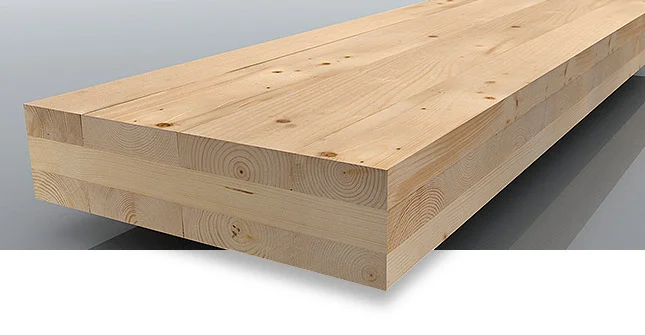Wood, a noble natural material par excellence, wants to break stereotypes and leave behind the clichés that make it a supposedly non-durable, weak, and flammable product.
Currently, architecture seems to be returning to its roots and sees its future in wood, now in a sustainable version and with a carbon footprint much lower than that of concrete and steel structures.
No, wood is not a new building material. But it is one of the oldest, which today is showing resistance to the various alternatives.
Not all fears about wood are justified. There are two main myths related to wood construction. The first one is that it is an easily inflammable material; the second one questions the resistance of wood to physical aggression.
That was until cross-laminated timber was born!
Cross-laminated Timber – When Technology Meets Tradition
Cross-laminated timber is an essential form of wood used in building construction. These are panels made of layers of solid wood planks crossed and glued together under pressure. They can be the size of an entire wall.
Globally known as CLT (Cross Laminated Timber), it has become the “super wood” for construction. Several characteristics make it a very attractive material. For example, it insulates heat and cold, preventing them from transmitting to other materials and buildings’ internal environment. In practice, it offers better natural insulation, which can be 20 times higher than traditional materials (such as concrete), allowing it to manage temperature and humidity conditions better.
Contrary to popular belief, the natural protection of trees against fire is charred wood due to its insulating power. Although it loses structural mass, when the flame source is removed, the fire goes out. Instead, when steel is heated, it becomes somewhat weaker. Steel buildings collapse most frequently due to fire.
Wood: An Eco-sustainable Material
The use of wood addresses several issues, including climate change. The idea is to build with environmentally friendly materials and a minimal CO2 footprint. In this competition, wood is without equal.
Steel and concrete buildings, for example, leave a carbon footprint that is responsible for 5-8% of global emissions. This carbon footprint consists of all the greenhouse gases emitted to manufacture these materials.
The so-called “wood of the future” was subjected to several tests. In them, it was determined, for example, that a traditional concrete construction of 30 meters emits 30 tons of CO2. The impact of the same building on CLT is much less: it can capture 12 tons of CO2.
In simple terms, wood offsets its production emissions with what the trees capture, which stores carbon instead of releasing it back into the atmosphere.

More Than Just a Structure
Building with wood in this day and age is not something strange, at least not in Europe. The trend in building construction is growing considerably, so much so that owners of old wooden structures are willing to pay considerable sums to restore their infrastructure.
Apart from the cost, environment, insulation, and comfort advantages, a wooden building has a unique sentimental value, probably due to the natural and living character of the material. And since wood is a timeless material, which evolves with time, don’t be surprised to discover more and more alternatives on the building sites.


